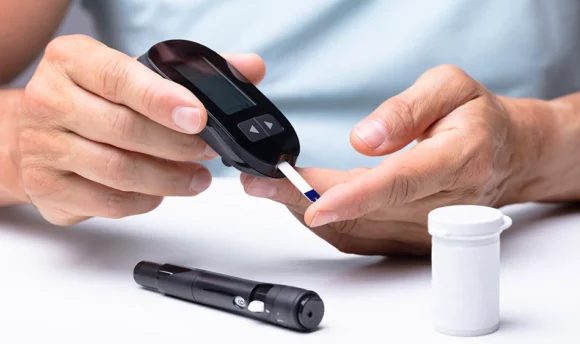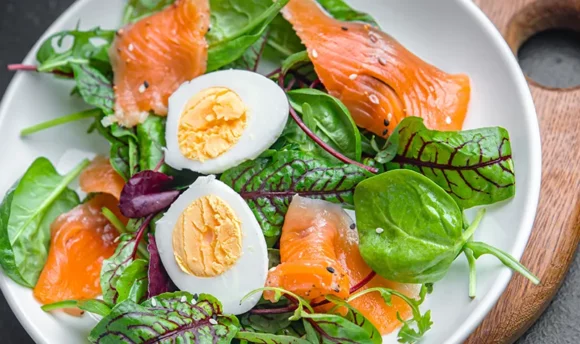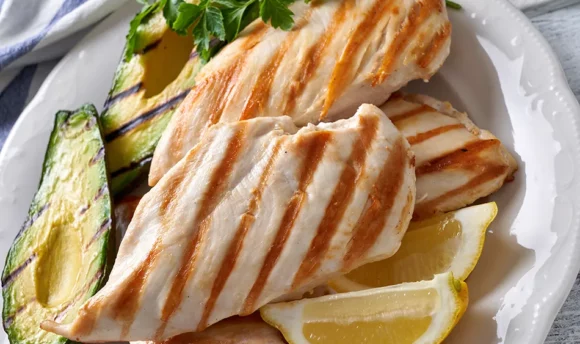Keto Food List Guide: Shop Smarter, Not Harder
Unlock a world of keto-friendly foods: explore our comprehensive keto food list!
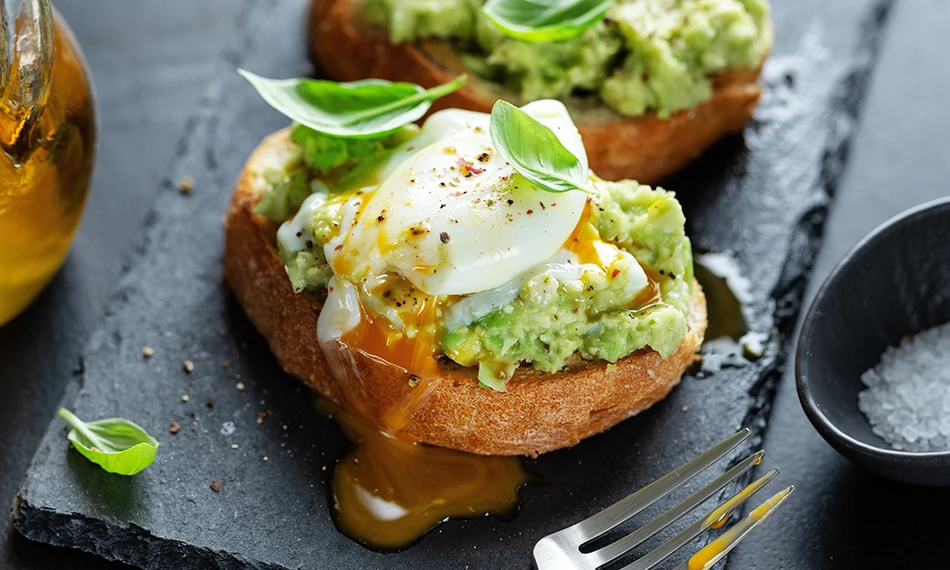
You may have heard of the keto diet and might even know how it works for weight management, blood sugar control, and improving your overall wellness. However, understanding which foods you can eat is sometimes confusing, especially since there are so many that should be limited on this low-carb diet.
To help you navigate the grocery store aisles a little more easily, we’ve put together a comprehensive guide to the best keto-friendly foods that will keep you on track with your health and fitness goals.
The Principles Behind the Keto Diet
The ketogenic diet requires followers to eat a high fat intake, a moderate amount of protein, and a low number of carbohydrates. Your body typically gets its energy from carbohydrates, but on a diet where carbs only make up 5–10% of your daily calorie intake, it uses stored fat instead.
This process of fat metabolism is called ketosis, which breaks the fats you consume down into molecules known as ketone bodies for energy. Originally used as a method for controlling seizures in children with epilepsy, staying in ketosis is now known to have several other health benefits, including:
- Assisting weight loss
- Stabilizing energy levels
- Boosting cognitive performance
- Helping those with diabetes manage blood sugar levels
- Reducing inflammation
Where to shop for keto foods
Shopping for keto-friendly groceries can often be a challenge, particularly as many of those labeled with the word “keto” often contain hidden carb-heavy ingredients that will break ketosis.
Therefore, we recommend getting your groceries from special online keto stores or farmers’ markets where you can find fresh produce that hasn’t been tampered with. Some other keto-friendly stores include:
- Fishmongers
- Butchers
- Polish delis
- Asian grocers
- Whole Foods Market
- Trader Joes
Keto Food List: The Only Guide You Will Need
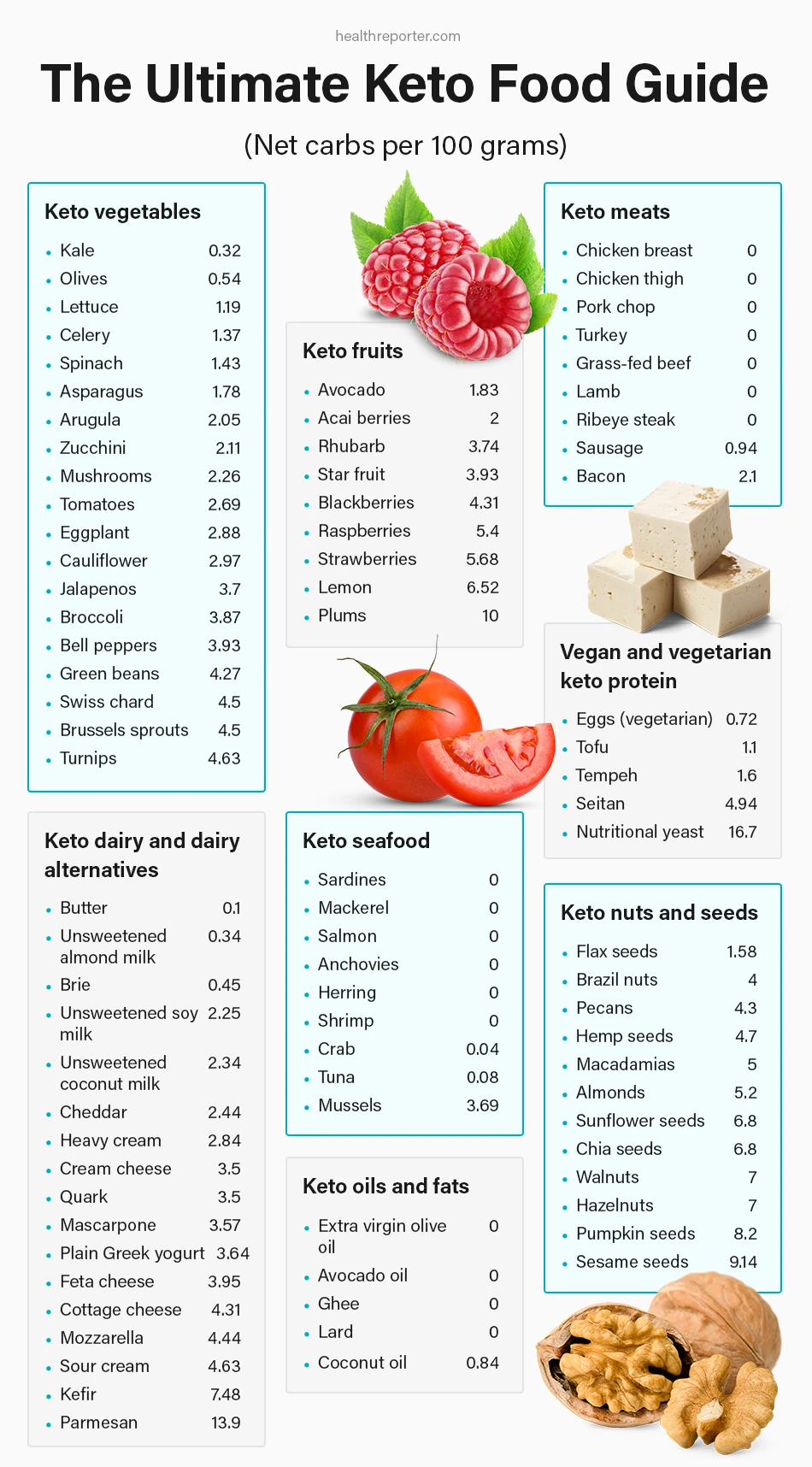

Limiting your intake of net carbs to 20–30 grams per day may seem challenging if you’re a beginner, but surprisingly, there’s a huge variety of nutritious foods that you can use to create delicious meals. You’ll never get bored with such a wide range of choices, so read on to find out what they are.
Keto vegetables
Leafy green vegetables are some of the best keto diet foods as they are extremely low in calories, which bulk your plate up without adding too many carbohydrates. They also contain good amounts of vitamin K, iron, and antioxidants that prevent some types of cancer and heart disease.
At the grocery store, try to choose vegetables that grow above ground, as those that grow below ground are usually high in carbohydrates. Here are some of the best leafy greens and other non-starchy vegetables that are ideal for your keto meals:
- Kale – 0.32 grams (net carbs per 100 grams)
- Olives – 0.54
- Lettuce – 1.19
- Celery – 1.37
- Spinach – 1.43
- Asparagus – 1.78
- Radishes – 1.8
- Arugula – 2.05
- Zucchini – 2.11
- Mushrooms – 2.26
- Tomatoes – 2.69
- Eggplant – 2.88
- Cauliflower – 2.97
- Jalapenos – 3.7
- Broccoli – 3.87
- Bell peppers – 3.93
- Green beans – 4.27
- Swiss chard – 4.5
- Brussels sprouts – 4.5
- Turnips – 4.63
Keto fruits
While many fruits are too high in carbs and natural sugars for ketosis, there are some that can be enjoyed as a low-carb, high-fiber option. You should try to limit your fruit consumption to keep your carbohydrate intake low and get most of your essential vitamins and minerals from vegetables instead.
The keto-friendly fruits that you can choose from include:
- Avocado – 1.83 grams (net carbs per 100 grams)
- Acai berries – 2
- Rhubarb – 3.74
- Star fruit – 3.93
- Blackberries – 4.31
- Raspberries – 5.4
- Strawberries – 5.68
- Lemon – 6.52
- Plums – 10
Keto meats
Lean meats contain minimal carbohydrates and are a great source of protein for the keto diet. This can help you maintain muscle mass while on a lower-calorie diet. They are also rich in essential vitamins and minerals, including B vitamins, zinc, selenium, potassium, and magnesium, which are essential for preventing nutrient deficiencies while on keto.
Although processed meats like hot dogs, bacon, and deli meats are technically allowed on the lazy keto diet, they are full of saturated fats that can raise your risk of heart disease and certain types of cancer. You should, therefore, avoid these and instead eat meats such as:
- Chicken breast – 0 grams (net carbs per 100 grams)
- Chicken thigh – 0
- Pork chop – 0
- Turkey – 0
- Grass-fed beef – 0
- Lamb – 0
- Ribeye steak – 0
- Sausage – 0.94
- Bacon – 2.1
Keto seafood
Many types of seafood and shellfish are ideal for staying in ketosis as they are high in protein, low-carb yet packed full of omega-3 fatty acids. These fats have several health benefits, from reducing your risk of heart disease and lowering inflammation levels to preventing cognitive decline. Fatty fish is also a great way to feel full for longer periods of time.
Studies also show that they improve cholesterol and blood sugar levels for those with type 2 diabetes, so try to include 8–10 ounces of the following seafood in your weekly keto meal plan:
- Sardines – 0 (net carbs per 100 grams)
- Mackerel – 0
- Salmon – 0
- Anchovies – 0
- Herring – 0
- Shrimp – 0
- Crab – 0.04
- Tuna – 0.08
- Mussels – 3.69
Vegan and vegetarian keto protein
If you’re on a vegetarian or plant-based diet, hitting your protein goals can be difficult without eating meat, especially when trying to consume keto-friendly foods. Luckily, most plant-based proteins are naturally low-carb, so you shouldn’t struggle to find some from the list below to suit you:
- Eggs (vegetarian) – 0.72 (net carbs per 100 grams)
- Tofu – 1.1
- Tempeh – 1.6
- Seitan – 4.94
- Nutritional yeast – 16.7
Keto dairy and dairy alternatives
Unsweetened, keto-friendly dairy products are rich in calcium and protein, both of which can help reduce appetite and keep you fuller for longer. This naturally reduces the number of calories you’ll consume, which is especially useful for those following the ketogenic diet for weight loss. Try some of the following dairy products:
- Butter – 0.1 (net carbs per 100 grams)
- Unsweetened almond milk – 0.34
- Brie – 0.45
- Unsweetened soy milk – 2.25
- Unsweetened coconut milk – 2.34
- Cheddar – 2.44
- Heavy cream – 2.84
- Cream cheese – 3.5
- Quark – 3.5
- Mascarpone – 3.57
- Plain Greek yogurt – 3.64
- Feta cheese – 3.95
- Cottage cheese – 4.31
- Mozzarella – 4.44
- Sour cream – 4.63
- Kefir – 7.48
- Parmesan – 13.9
Keto nuts and seeds
Keto-friendly nuts and seeds are packed full of heart-healthy unsaturated fats while being low in carbs. They’re also a great source of fiber, another nutrient that supports good heart and digestive health while contributing to your daily protein intake. Eat a handful of nuts as a snack, and top salads or smoothies with the following seeds:
- Flax seeds – 1.58 (net carbs per 100 grams)
- Brazil nuts – 4
- Pecans – 4.3
- Hemp seeds – 4.7
- Macadamias – 5
- Almonds – 5.2
- Sunflower seeds – 6.8
- Chia seeds – 6.8
- Walnuts – 7
- Hazelnuts – 7
- Pumpkin seeds – 8.2
- Sesame seeds – 9.14
Keto oils and fats
Foods containing poly and monounsaturated fats are the best options for the keto diet. You should also try swapping out animal fats such as lard for plant-based fats like olive oil, which can help to improve your triglyceride and cholesterol levels for overall better heart health.
Although coconut oil does contain saturated fat, it is made up of medium-chain triglycerides (MCTs), which are known to increase the production of ketone bodies. Include the following oils and fats in dressings or when cooking to up your daily fat consumption:
- Extra virgin olive oil – 0 (net carbs per 100 grams)
- Avocado oil – 0
- Ghee – 0
- Lard – 0
- Coconut oil – 0.84
Keto pantry items
No matter your diet, everyone needs a pantry or kitchen cupboard fully stocked with the basic essentials, from baking ingredients to sweet treats.
For example, cocoa-containing products are packed full of antioxidants and flavonols, plant compounds that may reduce the risk of heart disease. Also, keto-friendly sweeteners make a welcome treat for those with a sweet tooth, although you should only choose low-carb options.
Here are some ideas on how you can fill your pantry:
- Stevia – 0 (net carbs per 100 grams)
- Erythritol – 0
- Monk fruit extract – 0
- Aspartame – 0
- Sucralose – 0.9
- Flax meal – 1
- Cacao nibs – 3.67
- Tahini – 11.89
- Coconut flour – 13.3
- Almond flour – 13.3
- Cocoa powder – 19.7
- Dark chocolate containing at least 70% cocoa solids – 35
Keto spices
Keto-friendly meals don’t have to be boring or flavorless – there are plenty of seasonings that you can add to your food to spice it up. However, some spices will take you over your daily carb foods limit, so it’s important to be selective while cooking.
Here are the most keto-friendly spices and their net carbs per 100 grams:
- Himalayan pink salt – 0
- Mustard seeds – 28.09
- Cumin – 44.24
- Smoked paprika – 53.99
- Curry powder – 55.83
- Black pepper – 63.95
- Basil – 47.75
- Chili powder – 49.70
- Coriander – 52.1
- Turmeric – 67.14
- Cardamom – 68.47
- Ginger – 71.62
- Cayenne pepper – 56.63
- Garlic powder – 72.73
- Onion powder – 79.12
- Cinnamon – 80.59
Keto condiments and sauces
Knowing which sauces you can and can’t eat on a keto diet is often difficult, as many are packed full of hidden sugars and flavor enhancers. Try to look for keto-friendly condiments that are labeled as “low sugar,” along with naturally low-carb sauces such as:
- Tabasco – 0 grams (net carbs per 100 grams)
- Mayonnaise – 0.57
- Vinegar – 0.6
- Hollandaise sauce – 1.52
- Hot sauce – 1.8
- Mustard – 1.83
- Guacamole – 1.95
- Chimichurri – 2
- Caesar dressing – 2.8
- Pesto – 3.5
- Salsa – 4.94
- Marinara sauce – 6
- Lemon juice – 6.6
- Lime juice – 8
- Low-sugar ketchup – 12
Keto snacks and indulgences
If you often find your stomach rumbling between meals, it may be a sign that you need to add more protein, healthy fats, and leafy greens to your plate to keep you satisfied. However, it’s fine to enjoy a keto-friendly snack to tide you over from time to time, as this will keep you dedicated to the diet.
Choose from the following low-carb, nutrient-rich treats:
- Pork rinds – 0 grams (net carbs per 100-gram serving)
- Sugar-free beef jerky – 2
- Guacamole with celery sticks – 3.32
- Celery sticks with cream cheese – 4.87
- Keto-friendly chips, like kale chips – 5
- Cucumber sticks with cream cheese – 6.63
- Strawberries with heavy cream – 8.54
- Unsweetened Greek yogurt with raspberries – 9.04
Keto beverages
Tea and coffee without milk or sugar are both ideal for the keto diet as they contain nearly no calories and zero grams of carbohydrates. While coffee has been shown to lower your risk of heart disease, the antioxidants within tea can protect against cancer and high blood pressure and control blood sugar levels.
You should also replace soda with unsweetened sparkling drinks that are refreshing and fizzy but without the added sugar content. Some keto beverages to try are:
- Unsweetened tea – 0 grams (net carbs per 100 grams)
- Unsweetened coffee – 0
- Bone broth – 0
- Sparkling water – 0
- Soda water – 0
- Sugar-free iced tea – 0.1
- Miso soup – 2.47
Keto alcoholic drinks
While alcohol may disrupt your weight loss journey and increase your risk of liver disease, high blood pressure, and other chronic diseases, it can be consumed in moderation while on the keto diet. It’s recommended that men stick to 2 drinks or less per day and women stick to 1 drink or less.
However, many alcoholic beverages are loaded with carbohydrates and sugar, so try to select purer forms of alcohol, such as:
- Gin – 0 grams (net carbs per 100 grams)
- Vodka – 0
- Rum – 0
- Tequila – 0
- Whiskey – 0
- Dry red wine – 2
- Dry white wine – 2.6
- Light beers – Approximately 3
- Bloody Mary – 3.16
- Cosmopolitan Martini – 6
What Can’t You Eat on Keto? Everything You Should Avoid
As a low-carb diet, eating higher carbohydrate foods is prohibited on keto as this can kick your body out of ketosis. Some of the foods that you should limit therefore include:
- Starchy vegetables – Potatoes, onions, corn, and beets are packed full of carbohydrates.
- Some fruits – Bananas, raisins, and dates are high in natural sugars and carbs.
- Certain beverages – Soda, fruit juice, whole and oat milk, some cocktails, cider, and regular beers contain large amounts of sugar.
- Processed meats – Deli meats, hot dogs, and bacon increase your risk of cancer and often contain hidden sugars in the form of marinades and fillers.
- Deep-fried foods – These are high in trans and saturated fats, which increase the risk of heart disease.
- Grains – Bread, rice, pasta, cereal, and crackers are high in carbohydrates.
- Beans and legumes – Lentils, chickpeas, and black beans can be difficult to fit into a keto diet due to their carb content.
- Low-fat foods – They are often packed full of added sugars for a flavor boost, which compensates for their lack of fat.
- Baked goods – Pretzels, cakes, and cookies are loaded with sugar and carbs that will take you over your daily budget.
- Some condiments – Normal ketchup, sweet chili, and barbecue sauces are low in fiber and other vital nutrients yet high in carbs and often contain added sugars.
- Trail mix and dried fruit – When dried, the sugar within the fruit becomes concentrated into smaller serving sizes. Along with dried fruit, trail mix usually contains other added sugars, such as chocolate chips or nuts.
6 Dos and Don’ts for Keto Foods List
To maintain optimal health while on the ketogenic diet, there are certain things that you should do when shopping for, preparing, and consuming your keto-friendly meals. Here are some important do’s and don’ts to keep in mind:
#1 Do prioritize healthy fats
Fat makes up the majority of your calorie intake on the keto diet, so it’s important to prioritize eating those that help to keep us healthy. For example, although many are technically keto-friendly, eating too many foods containing saturated fats increases your “bad” LDL cholesterol levels and raises your risk of heart disease.
In contrast, mono and polyunsaturated fats not only maintain good heart health but also keep you fuller for longer and can prevent overeating.
#2 Don’t forget to read labels
You may be eager to try the latest product in your local grocery store marked “perfect for low-carb diets,” but don’t be fooled. These products sometimes contain hidden carbohydrates in the form of sugar, for example, that will actually take you over your daily carb budget. So, be sure to read every food label carefully, particularly the carbohydrate and sugars section.
#3 Do stay hydrated
Staying hydrated is essential for flushing waste from our bodies, carrying nutrients to cells, and regulating body temperature, just to name a few functions. It’s recommended that men drink 3.7 liters per day and women drink 2.7 liters per day.
However, those going through ketosis require even more than this, as water is lost at a faster rate, putting you at risk of dehydration. Drinking plenty of water has also been shown to support fat loss and suppress your appetite throughout the day.
#4 Don’t ignore macros
Keeping track of your carbohydrate, protein, and fat consumption is essential for staying in ketosis and ensuring that your body gets all of the essential nutrients it requires.
If you need more guidance on macros, then try downloading Keto Cycle. The app provides you with a personalized keto-friendly meal plan that calculates your unique calorie and macro intake to help you meet your goals.
#5 Do eat more low-carb veggies
Filling up your plate with keto-friendly vegetables contributes to weight loss as they’re not only low-carb but also low-calorie. This means that you can consume them in large portions, helping keep you full and satisfied while maintaining a calorie deficit.
#6 Don’t overindulge in snacks
Although snacks aren’t off limits on keto, eating too many can cause the calories to start racking up, taking you over your daily calorie budget and making it harder to lose weight. Instead, prioritize protein, healthy fats, and fiber in your meals to keep your snacking to a minimum.
FAQs
Although eating keto is often associated with high-protein animal foods like meat and fish, the diet can easily be adapted to fit vegetarian and vegan diets. Choose high-fat, protein-rich options such as avocados, nuts and seeds, and tofu.
Yes, many full-fat dairy products are ideal for keto, including plain Greek yogurt, some cheeses, and heavy cream. However, you should avoid dairy products that are high-carb or contain added sugars, which usually include low-fat dairy, some soft cheeses, ice cream, flavored milk, and sweetened yogurts.
You can consume low-carb fruits like berries, rhubarb, and kiwi, but you should steer clear of carbohydrate-rich fruits such as bananas.
A Word From Our MD
While the keto diet has many benefits, including weight loss and blood glucose control, sticking to a diet that restricts one food group can be difficult. It also comes with negative side effects such as the keto flu, keto breath, and nutrient deficiencies, and the long-term consequences are not yet fully understood.
However, if you are hoping to stick to this diet but are worried about missing out on your favorite fast food, carb-heavy meals, and Starbucks drinks, there are many simple swaps that you can make. For example, try spiralized zucchini instead of spaghetti, mash cauliflower into cauliflower rice, and add a sweetener to your tea or coffee rather than sugar.
You should avoid the ketogenic diet altogether if you are pregnant, breastfeeding, on certain medications, or if you have a history of eating disorders. It’s important to consult a doctor before making any sudden dietary changes.
Conclusion
Keto provides a wide variety of health benefits, but restricting carbohydrates and eating more fats can be a difficult approach for many. However, as we’ve shown, there are a wide variety of nutritious and delicious foods that you can enjoy on this diet while staying within the right macronutrient balance.
Try to eat a variety of non-starchy vegetables, lean proteins, and heart-healthy unsaturated fats to ensure that you’re getting all of the vital vitamins and minerals you need while following keto.

















































 Select your language:
Select your language: 






